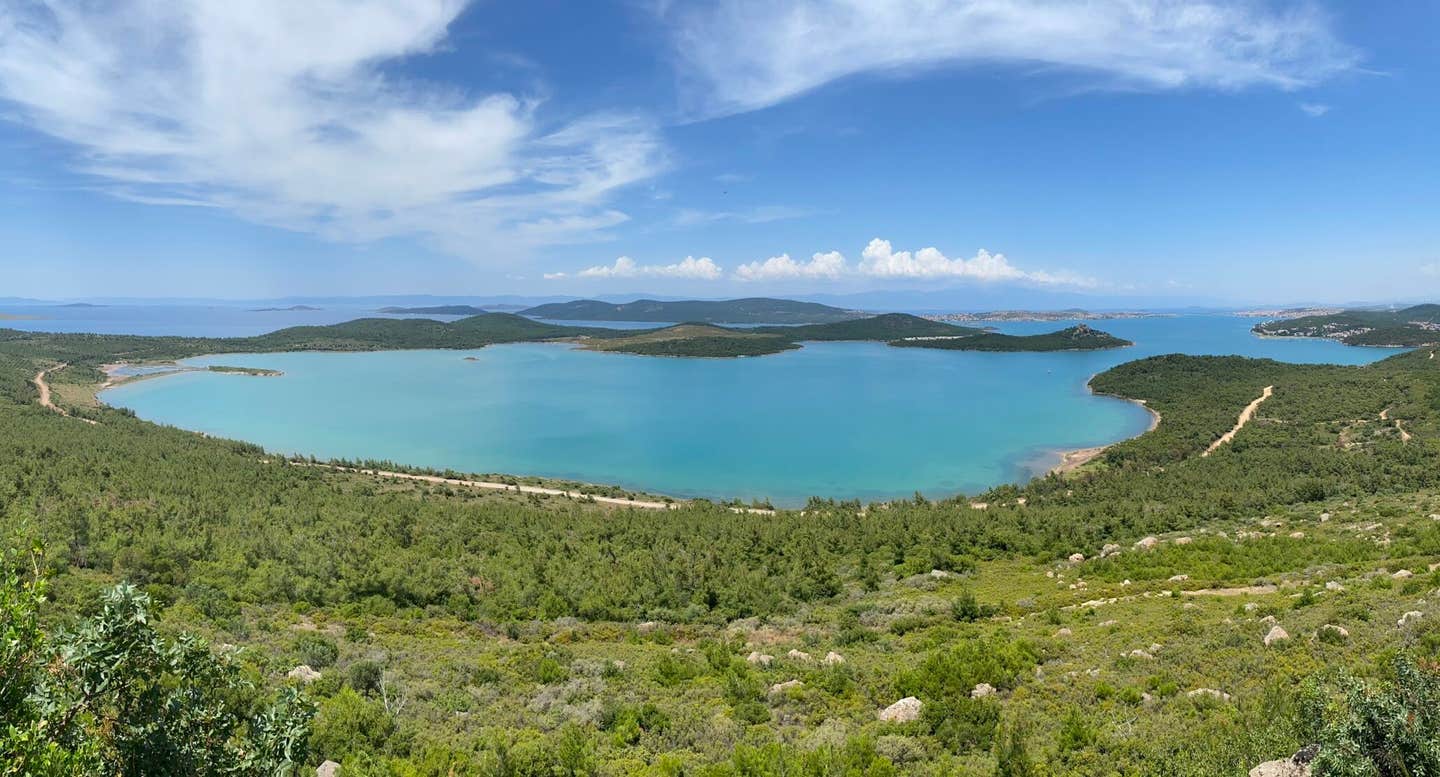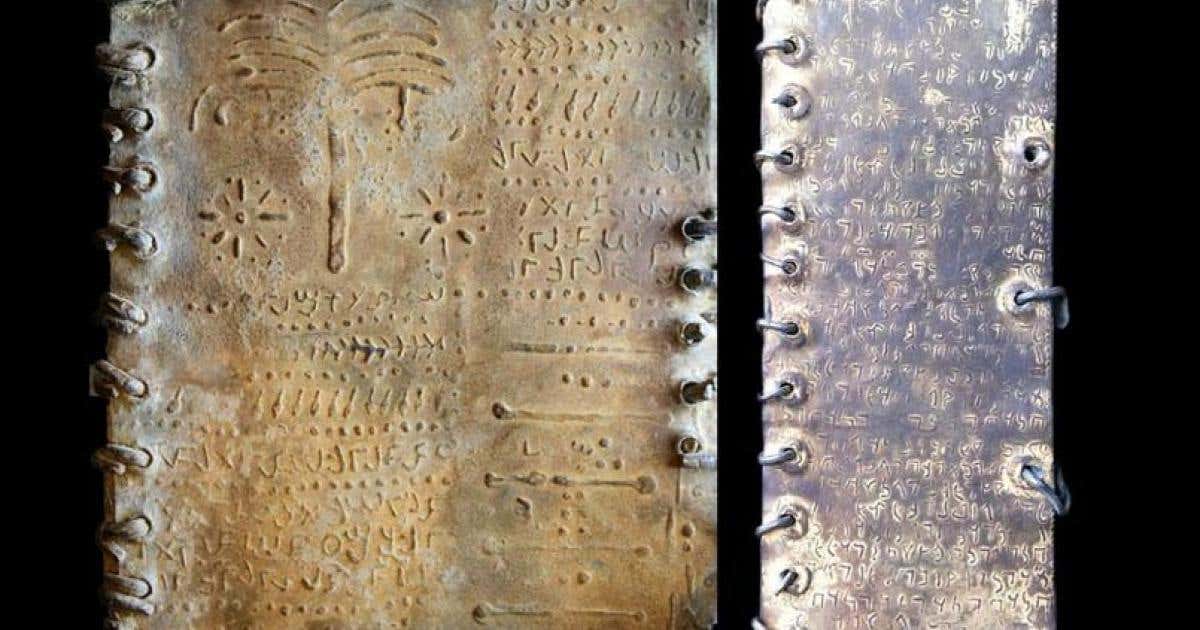Ancient land bridge discovery: How humans migrated to Europe during the last Ice Age
Archaeologists uncover ancient tools in Turkey’s Ayvalık, revealing a lost land bridge that once connected Asia and Europe.

A new archaeological study reveals that Turkey’s Ayvalık region once formed a land bridge between Asia and Europe. (CREDIT: Journal of Island and Coastal Archaeology)
Along Turkey’s northwestern shoreline, where the Aegean Sea meets the olive-covered ridges of Anatolia, lies a quiet district called Ayvalık. Now it's famous for its sun-kissed islands and seafront cafés, but around tens of thousands of years ago, it might have been one of the gateways by which the first people escaped from Africa and entered Europe.
New study by a Turkish archaeology team has revealed that Ayvalık was once connected to a vast coastal plain — a natural bridge between continents when seas during the Ice Age were considerably lower. In their study, they conclude that the lost landscape is thought to have been a main route for early humans and one of the missing links in mankind's earliest migrations.
Rediscovering a Lost World
The revelation is from an interdisciplinary study consisting of archaeologists, geologists, and paleoanthropologists from different Turkish universities. The team used drones, satellite imaging, and ground surveys to reconstruct a long-buried landscape that was present during the Pleistocene era.
Sea levels were over 100 meters lower than today, and the wide fertile belt between Ayvalık today and neighboring islands such as Lesbos and Alibey was exposed. The area was a refuge for migrating hunter-gatherers in pursuit of herds and freshwater routes between continents with rivers, lagoons, and dense vegetation.
"The local landscape would have been supplying both resources and refuge," the team noted, pointing to the availability of springs, flint deposits, and elevated ground — ideal for tool production and temporary camps.
Stone Tools Speak Across Time
The most compelling proof came in the form of 138 stone tools across 10 sites in a 200-square-kilometer area. They were handaxes, cleavers, and beautifully crafted flake tools of chert and quartzite. They were marked by signatures of Acheulean and Mousterian technologies and thus linked to Homo erectus and early Neanderthals.
"Our archaeological discovery has shown that this currently peaceful region once potentially offered an essential land bridge for the migration of human beings in the Pleistocene era," explained Dr. Göknur Karahan from Hacettepe University, a lead researcher.
She described the moment her team first held these tools as “unforgettable.” Walking through landscapes where no Paleolithic remains had ever been recorded, the archaeologists were suddenly holding evidence of ancient life. “It feels like we’re adding an entirely new page to the story of human dispersal,” she said.
Reconstructing a Vanished Landscape
Unraveling Ayvalık's ancient landscape involved recreating clues buried on shore and on the seafloor. Sediment coring and seafloor surveys revealed ancient riverbeds and valleys submerged beneath modern Aegean waters. During the last Ice Age, these valleys were part of a vast lowland plain connecting Anatolia to Europe. When the world warmed and the ice melted, the advancing sea covered this corridor, leaving behind traces of the inhabitants who once traversed it.
Ankara University associate professor Kadriye Özçcelik explained how these reconstructions show the islands and peninsulas of Ayvalık originally formed interior areas of a wide terrestrial landscape. "They place emphasis on the importance of the region in deciphering hominin dispersals in the northeastern Aegean," she stated.
This early text, the researchers argue, would have given a relatively direct route from Africa to southern Europe — one that holds comparison with more widely accepted Levantine and Balkan migration routes.
Evidence of Innovation and Survival
The majority of the tools in Ayvalık demonstrate high-level craftmanship. Levallois-type flake tools, for example, possess a level of sophistication characteristic of Neanderthals and early modern humans. The tools were used for butchering animals, shaping hides, and making wooden spears.
The existence of these objects in Ayvalık is particularly noteworthy," according to Dr. Karahan. "They are concrete evidence that the region was part of wider technological traditions shared across Africa, Asia, and Europe."
Although the study team did not find human remains, the types and frequency of tools indicate repeated use of the ground for hundreds of thousands of years. Clusters of artifacts at the foot of old river terraces and on elevated points suggest that groups went back seasonally, perhaps after animal migration or using flint-rich outcrops.
Science Beneath the Surface
New technology helped spearhead the team's search. Using Geographic Information Systems (GIS) and predictive modeling, researchers combined topography information with archaeological surveys to identify their target areas of excavation. These technologies allowed researchers to discover buried terraces and artifacts that were not apparent to the naked eye.
The June 2022 fieldwork was not easy. Muddy terrain and dense alluvial cover made it difficult to find ancient layers. Despite all these, the team managed to identify good-quality raw material sources and well-preserved artifacts.
"The discovery of this rich and well-preserved array of artifacts exceeded our expectations," said Dr. Karahan. "Each discovery was new and exciting for the team."
Following Humanity's Expanding Footsteps
For decades, scientists debated the way and the place that humans dispersed out of Africa into Europe — through the Levant, the Caucasus, or through Anatolia. The discoveries at Ayvalık make the Anatolian option more plausible, demonstrating that this region was not a barrier but an overpass.
Aid similarities between Ayvalık tools and those in Israel's Tabun Cave and Jordan's Ubeidiya site point to long-distance cultural exchanges throughout the eastern Mediterranean. The similarities point to intertwined traditions and mobility networks of thousands of miles.
Dr. Hande Bulut from Düzce University also commented that the findings reveal the promise of Ayvalık as a long-term residence. "Although early, our work suggests that this area has the potential to highlight technological advancement and communication across the Aegean," she said.
Saving a Prehistoric Treasure
Now, Ayvalık's peaceful charm conceals its rich history, but scholars hope that they will preserve it by raising consciousness. Fast-paced urbanization and tourism have threatened numerous open-air sites. There are plans to work with local authorities on heritage trails and museum displays that revive the region's prehistoric past.
More research will be conducted under the sea by underwater archaeology to scan the Aegean seabed for more artifacts and possible ancient camps. Through sonar mapping and unmanned submersibles, researchers are hoping to locate sites smothered under sediment since the last Ice Age.
As scientists work on more discoveries, Ayvalık's story becomes richer — not only as an archaeological site, but as a history of human resilience and curiosity.
Practical Implications of the Research
The findings advance the world's understanding of the early humans' emigration out of Africa and how they adapted to new environments. Through finding that western Anatolia was an old successful crossroads, the research redefines migration models used in archaeology and genetics.
The study also underlines the importance of the integration of geology, climate science, and archaeology to reconstruct lost landscapes — an approach that has the potential to be exported to other submerged landscapes around the world.
Preservation of the sites can promote sustainable cultural tourism, providing local communities educational and economic rewards while protecting fragile prehistoric heritage.
Research findings are available online in the Journal of Island and Coastal Archaeology.
Related Stories
- Million‑year‑old tools reveal early human sea crossing near ‘Hobbit’s’ island
- Antarctica’s buried landscape may be slowing climate change, study finds
- Scientists propose simple new way to spot alien life in the universe
Like these kind of feel good stories? Get The Brighter Side of News' newsletter.
Joseph Shavit
Science News Writer, Editor-At-Large and Publisher
Joseph Shavit, based in Los Angeles, is a seasoned science journalist, editor and co-founder of The Brighter Side of News, where he transforms complex discoveries into clear, engaging stories for general readers. With experience at major media groups like Times Mirror and Tribune, he writes with both authority and curiosity. His work spans astronomy, physics, quantum mechanics, climate change, artificial intelligence, health, and medicine. Known for linking breakthroughs to real-world markets, he highlights how research transitions into products and industries that shape daily life.



